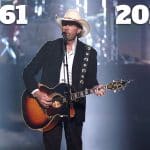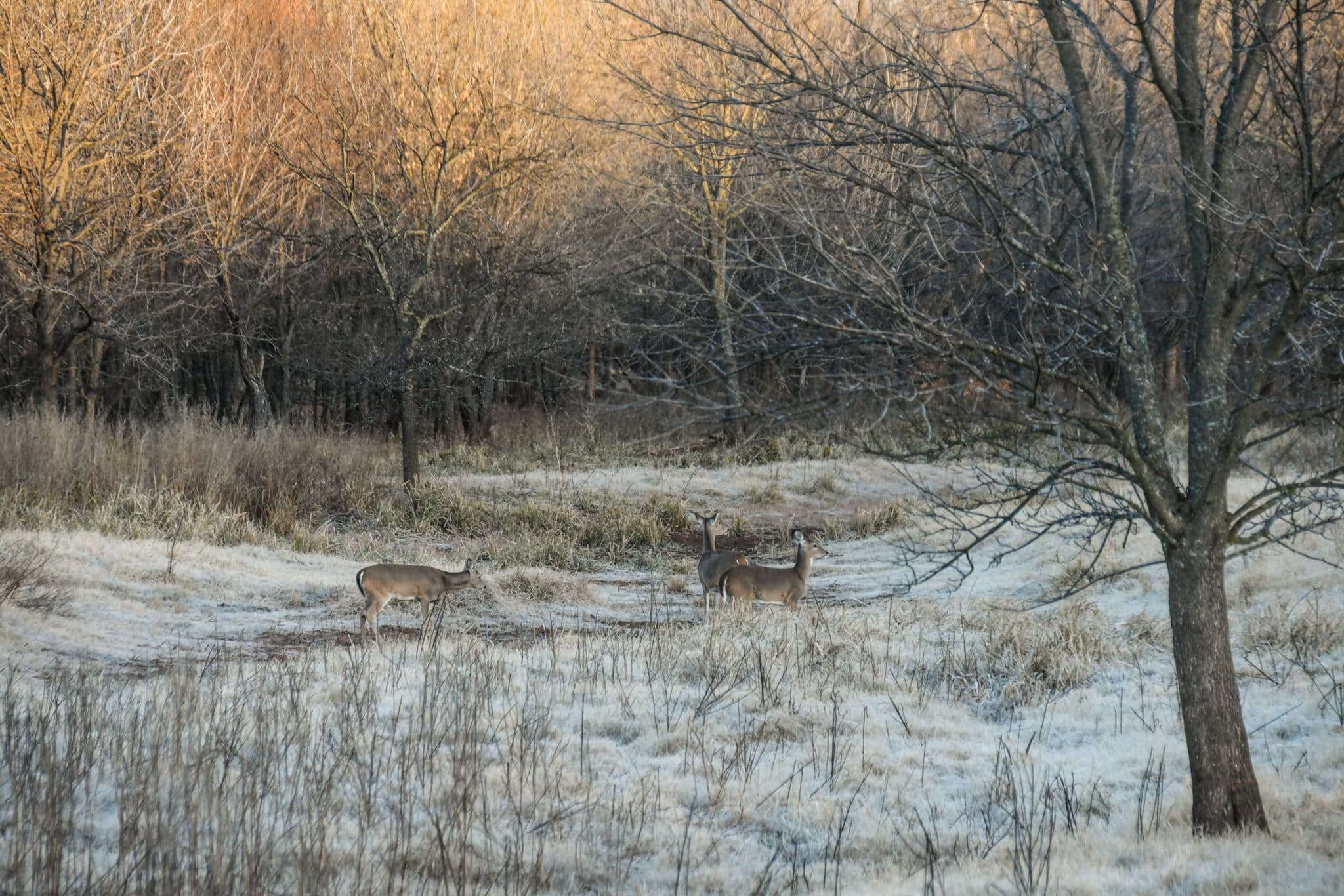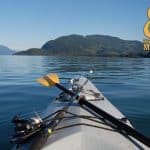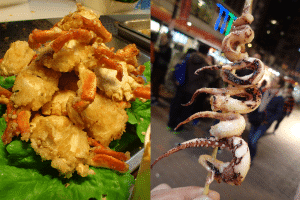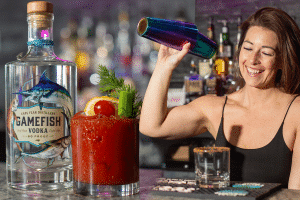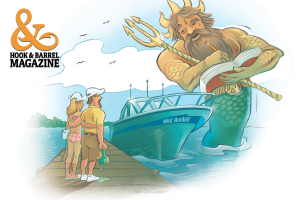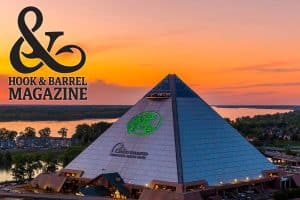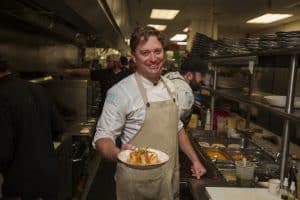- By Glenn Hunter
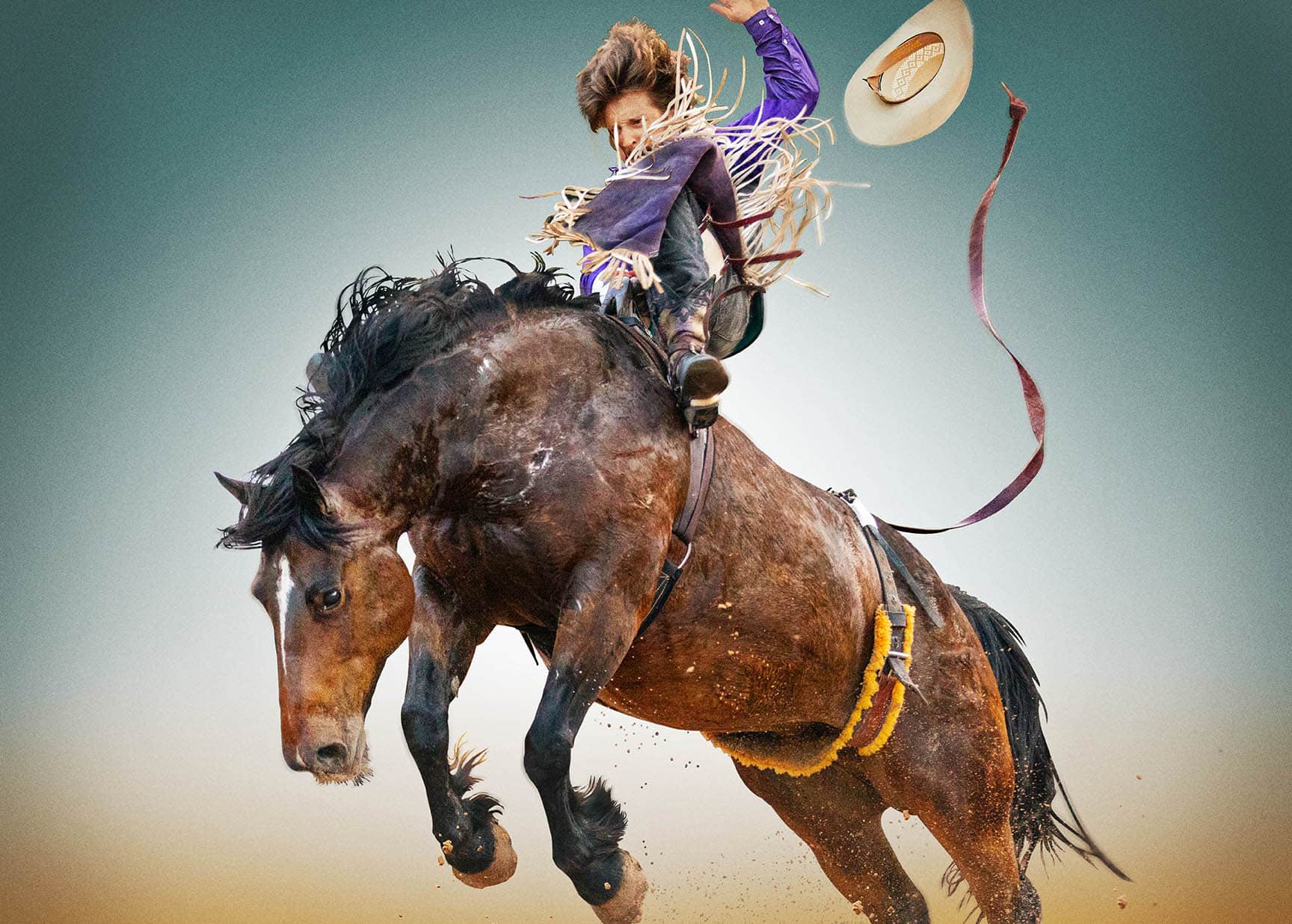
Professional bareback riders Tilden Hooper and Kaycee Feild show how fierce rivals in the rodeo arena can also be good friends.
If Hollywood decides to make a buddy movie about modern-day professional rodeo, it couldn’t pick two better stars for the flick than bareback riders Tilden Hooper and Kaycee Feild. Hooper, a 32-year-old Texan, and Feild, a 33-year-old Utah native, have been best friends, intense competitors, and traveling partners on the Professional Rodeo Cowboys Association (PRCA) circuit for 12 years. And, in a sport that has about 5,300 cowboys and cowgirls competing in PRCA rodeos around the country, they’ve both enjoyed great success.
Going into the Wrangler National Finals Rodeo (NFR) in Arlington, Texas, last month, Feild (pronounced Field) was the world’s number 2-ranked bareback rider. Over the years, he’s qualified 11 times for the NFR and won four world titles in bareback riding. Hooper entered the 2020 NFR—the PRCA’s equivalent of the Super Bowl or World Series—not far behind Feild as the number 4-ranked bareback rider. He’s qualified seven times for the national finals.
In a year when many rodeos were canceled due to the coronavirus pandemic, Feild went into the Arlington competition having won more than $94,000 in 2020, while Hooper had pocketed at least $77,000. But over the last couple of years, they’ve both won much more. Hooper’s earnings were $238,239 in 2019 and $245,583 in 2018, while Feild raked in $232,320 and $231,445, respectively.
As impressive as those figures are, they’re even more remarkable when you consider the odds against the contestants. Bareback riders pick up their own travel expenses and pay an entry fee for each rodeo, but they only win money back if they score high enough for their control and spurring technique aboard a quick, powerful bucking horse for eight full seconds.

Q&A with Tilden Hooper and Kaycee Feild
We caught up with Hooper and Feild by phone about a month before the NFR, and began the conversation by asking about their event and what it means to them:
Tilden Hooper: I think bareback riding is the most exciting event in rodeo. It’s the most physically demanding event, and to me it’s the most like a fight. The other roughstock events, you’re kind of matching moves with the animal. But in bareback riding, you’re going to get hit, and you’re going to hit them back. When you’re doing something that happens as fast as bareback riding, if you’re head’s not in the right place, if you’re mental game isn’t tight, your physical game cannot keep up. Bareback riders are a different breed. Most of the bull riders and bronc riders will tell you that bareback riders are the craziest guys out there. In my mind, I think they’re the roughest, toughest bunch of guys in rodeo.
Kaycee Feild: I’ve been very fortunate to do some other extreme sports, but none of them compare to nodding your head on a bucking horse—a 1,500-pound bucking horse, a trained athletic horse that’s been bred for several years to be a bucking horse. You’re tied to him. If you slack up a little bit, if you don’t give it 100 percent it ain’t going to go good. That right there says a lot about the bareback athletes and nodding your head on a big old animal like that. And giving it your all every single time, 75 times a year. When guys overcome their fears and pressure and go out there and make a perfect ride, it’s something cool to see.
Hook & Barrel: When you climb on the horse in the chute, are you visualizing a perfect ride every time?
Feild: I try to visualize it hundreds and hundreds of times before I get to the rodeo. A lot happens really fast. You’ve got to be mentally prepared. You’ve dreamed of yourself on every sort of bucking horse—the biggest and baddest or the easiest hopper.
Hooper: After the grand entry starts, the American flag comes in, and they start playing the national anthem, the bareback riders are usually the first event. The guys perk up, the horses perk up, and everybody starts realizing it’s game time. At that point I try to focus on the two or three things I can control: getting my body loosened up, not overthinking anything, and then getting my [suitcase-handle-like leather rigging] where it needs to be and exactly how I want it. To the point that I know all I got to do is get in there, get my hand in where I need to be, nod, and get that gate open so I can go show off.
Feild: Hey, hey, gettin’ a little cocky!
Hooper: It’s the truth.

H&B: Bareback riding causes a lot of injuries, doesn’t it?
Feild: With rodeo, you’re going to have injuries no matter what. For me, it’s been about every other season, and sometimes I go two years before I get one. But, they’re going to come, and if you’re in great physical shape, you can come back a lot sooner. Bareback riders’ careers are pretty dang short considering the rest of the rodeo events, and you’ve got to make the best of it while you can. Coming back from injuries as soon as possible is very important for a longer career.
H&B: How many rodeos do you compete in each year?
Feild: This year I went to 30, and Tilden went to, what, 35 or 36? This was an off-year because of the pandemic, but in a normal year we would go to 70, 75 max. When we were young, shoot, I think we went to over 100.
H&B: How do you pick which ones to enter?
Hooper: This year we went to the 35 or 36 biggest rodeos as far as purse is concerned. And then, after that, we look at the stock that’s going to be available there, because if the stock isn’t up to par, you’re not going to have a really fair chance to compete. We have to compete where the money is the highest, because that’s where we can actually make a living, and that’s where the best horses and the best guys are going to be.
H&B: What’s it like day-to-day traveling to all these rodeos?
Hooper: During the winter, like January through March or April, most all the big rodeos go on right here in Texas or around Texas. So, when we were younger, Kaycee would come and stay most of the winter at my house in Texas, and we’d go around to the rodeos. During the summertime, most of the rodeos move out to the west coast. So, I would spend all summer until the fall out there at Kaycee’s house in Utah, and we’d operate from his house. We go rodeo for four or five days at a time and then come back home for two or three days to get refreshed.
Feild: We’d travel in a four-door pickup with a Capri Camper, which has a bed, shower, refrigerator, and microwave. Pile up in there, get your rigging bag and your clothes bag, and tell your wife or girlfriend, ‘We’ll see you in the fall if we see you at all.’ Then hit the road. Showering every two or three days, brushing your teeth if you can, and going around from rodeo to rodeo. But, over the last five or six years, things have changed substantially for Kaycee and me. He’s got a wife and three kids, and I’ve got a wife and a kid on the way. So now we try to bring our families along and see the sights a little bit more.
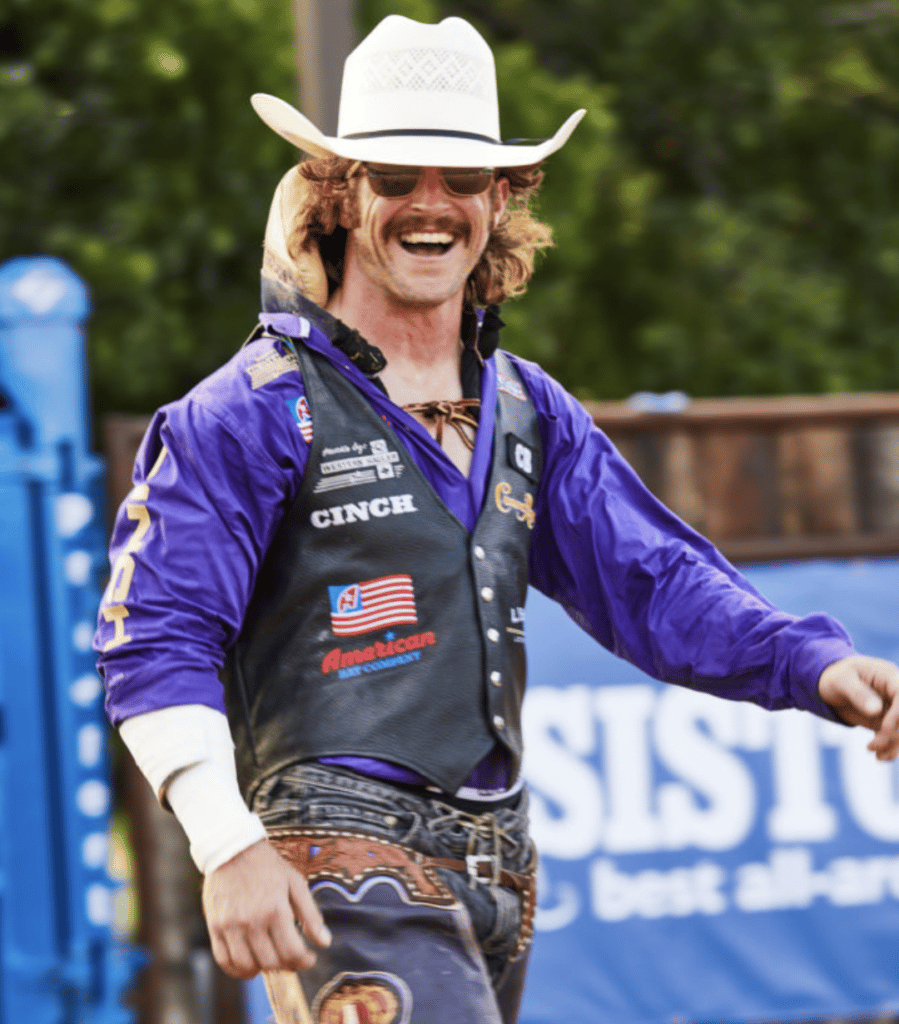
H&B: How was it that you guys met and started traveling together in the first place?
Feild: It was pretty easy right off the bat, because our values and our goals lined up. Tilden wanted to be the best bareback rider, and I wanted to be the best bareback rider. But, at the end of the day, we want to be good people and make an impact on others’ lives. I felt that about Tilden the first day I met him, and it made it easy to go up and down the road.
Hooper: One of the main things we found a bond over really fast was that we both fully understood that what we do in the arena is a really small part of our lives. The big picture is to leave everything better and to affect people’s lives in a positive manner. Then we just kind of struck up a friendship from there.
H&B: When you say values are you talking about Christian values, or family values, or what kind of values exactly?
Feild: I’d like to say Christian values, and then the rodeo world, too, they have their own values, and respect is one of those. In the rodeo world people really respect each other. They know how much they love what they’re doing for a living and how much blood and sweat goes into it. Your sport is more than just yourself. I wouldn’t say it’s the 10 rodeo rules or cowboy rules, but it’s ‘live like Christ, give back, love thy neighbor, and make life the best you possibly can.’ It’s kind of a dying breed, but it’s cool.
Hooper: Myself, personally, as long as my priorities are keeping God first and my family second and working hard and respecting the people around me and doing what I say I’ll do and my word being my bond, that’s what I shoot for.

H&B: I read that your fathers got each of you started in rodeo. Tilden’s father, Terry Hooper, used to ride bareback broncs some, and Kaycee’s dad, the late Lewis Feild, was a five-time PRCA world champion (bareback riding and all-around) in the 1980s.
Hooper: I was very blessed to have gotten to know Kaycee’s dad and family from a competitive standpoint. But on the other hand, the values he instilled in Kaycee were the same values my dad instilled in me.
Feild: It’s crazy. His dad and mine lived completely different lives, but what they valued in life was their family, their kids, and raising their kids right. When I first started rodeoing, me and Tilden, we’d go back and hang out with my dad. It was fun to tell rodeo stories from the past week and what bucking horses did.
H&B: You two are professional rivals as well as friends. How does that work?
Hooper: That’s what’s special about our friendship. It’s been a huge blessing for me and my career to have got to compete against Kaycee. Because, if you look at the stats and what he’s done in his career, he has damn sure been the most dominant bareback rider of our generation. His ability and his domination in the sport is what’s pushed me to where I’m at now, to where I feel like I have a chance to go and beat him.
H&B: I read that rodeo was the seventh most popular sport in overall attendance now, ahead of golf and tennis. Do you see its popularity continuing to grow?
Hooper: I think our sport has grown in leaps and bounds since I became a member of the PRCA in 2007. The quality of the livestock has gotten better, the quality of the rodeos has gotten better. I do believe rodeo’s going to grow in popularity, and I think the climate of what’s going on in our country only helps, because the world could use a little more cowboy, honestly.
Feild: He’s exactly right. I think the rodeo, the image of rodeo and the cowboy way is coming back. Like Tilden said, all those people need a little more cowboy in them and that good humble spirit of ‘put your head down and get through anything.’
H&B: How many more years do you guys think you’ll be doing this?
Feild: What’s most important to me is to be aware of my body and what’s going on with it and the injuries. I need to hang it up at the right time, when my body says it’s done. That may be this year after the NFR, or it might be when I’m 36 or 37 at the NFR. I do dream of my last horse being at the NFR.
Hooper: If a guy makes it to 35, that’s a pretty long career in bareback riding. I had what some could consider a career-ending injury at 24 and, rehabbing from that injury, I didn’t know when it healed up if I would be able to ride. But, God’s blessing was to continue to do this. I don’t have an age in my head for hanging it up, though. It’s more of a feeling I’m waiting for. The moment where I show up to the rodeo and don’t feel like I’m the baddest guy there and that I can beat anyone there, that’s when I want to come home.
What is the Cowboy Way? Click here.




